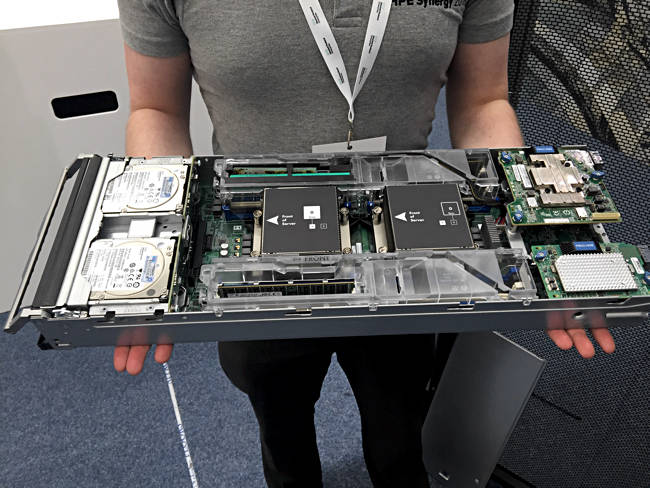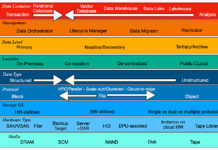HPE plans to decompose SimpliVity hyperconverged systems into its Synergy pool of composable system.
HPE launched Synergy composable systems technology in 2015. The underlying idea is to organise major IT components in an IT resource pool, thus ensuring they are not stranded inside fixed server configurations. Envisage a rack-level collection of processors, memory, storage, virtualization software and network connectivity.

When a server system is needed to run an app it is dynamically composed from the appropriate elements. The app is executed and the resource elements are returned to the pool for re-use.

According to HPE, composable systems lower system management burden and improve resource usage. Benefits include:
- 25 per cent lower IT infrastructure costs by eliminating over-provisioning and stranded capacity
- 71 per cent less staff time per server deployment and 30 per cent higher application team productivity by increasing operational efficiency and rapid deployment of IT resources
- 60 per cent more efficient IT infrastructure teams by reducing complexity and manual tasks
Dell EMC, Western Digital, DriveScale, Liqid and Kaminario are all developing composable systems.
HPE Synergy is $1.5bn business
At HPE Discover in Las Vegas this month, CEO Antonio Neri said in a keynote: “We…knew that the future was about composability, so we were the first to bring to market a composable cloud experience to the datac entre in HP Synergy, which is now a $1.5bn business.”
HPE said more than 3000 customers have bought Synergy systems and report 78 per cent year-over-year revenues growth.
The company recently added ProLiant gen 10 360, 380 and 560 servers its Synergy-based composable rack infrastructure. Once composed these can support Nimble arrays and vSAN, and a pool of hyperconverged SimpliVity.
Decomposing SimpliVity
But HPE wants to go further than including SimpliVity merely as a usable element in a composable system The company wants to dynamically compose SimpliVity systems. In other words, take the compute, networking, storage and software elements of a SimpliVity system and turn into a composed system at application run-time.
Hyperconverged systems combine and integrate servers, storage, virtualization software and network connectivity into a single and scale-out system.
Paul Miller,VP of marketing for HPE’s converged data center infrastructure business, discussed the combination of Synergy and SimpliVity last week in an interview with our sister publication The Next Platform.
Miller said the company is “not composing hyperconverged yet. That’s what we want to do, compose hyperconverged as a workload. We’re going to focus on unique workloads that you can instantaneously compose.”
Net:net
HPE thinks composable systems are the next step in the route to simpler and more automated IT operations, better resource utilisation and lower cost of ownership
But there is an interesting side effect when hyperconverged systems become composable. With hyperconvergence, tightly integrated server, storage, virtualization and network connectivity are treated as Lego blocks and operated as single, scale-out systems.
In a composable set-up, a hyperconverged system becomes a software abstraction, a composability template, defining a set of IT resources for a particular kind of workload. Hyperconvergence as an orderable and separate IT technology ceases to exist.
Adding SimpliVity to Synergy gives you synergies, so to speak. The marketeers can certainly have fun with that notion.








